23 Simple Ways to Be More Eco-Friendly in the Kitchen
See Top CompaniesFrom grocery shopping to food preparation and cleaning to decor, you can go green in the kitchen in a variety of painless, inexpensive ways and make the heart of your home more sustainable.
Not only will implementing these minor adjustments have a positive impact on the planet, many of them will bring about financial and health benefits for you and your family.

1. Bring your own reusable bags grocery shopping
Because the cost of recycling plastic bags is relatively high and many recyclers won’t accept them, they typically end up in landfills, where they can take up to 1,000 years to decompose, or in oceans, where animals such as sea turtles confuse them with food, eat them, and die.
To combat this problem, invest in a few tote bags that you love and commit to using them. After you’ve unloaded the groceries in your kitchen, stow your totes in your car, purse, or another place you won’t forget them next time you need to make a trip to the store.
In addition to the environmental benefits, utilizing reusable shopping bags has financial benefits as well; many grocery stores offer discounts or reward points to customers who bring their own reusable bags to the store.

The Top Solar Companies



2. Purchase in bulk
Buying in bulk is good for the environment because it reduces the amount of packaging needed to contain the products, which means less waste output that has to be disposed of.
It also cuts down on the levels of carbon dioxide emitted into the atmosphere when the manufacturer is transporting the food to the store and reduces the number of trips you have to take to get groceries.
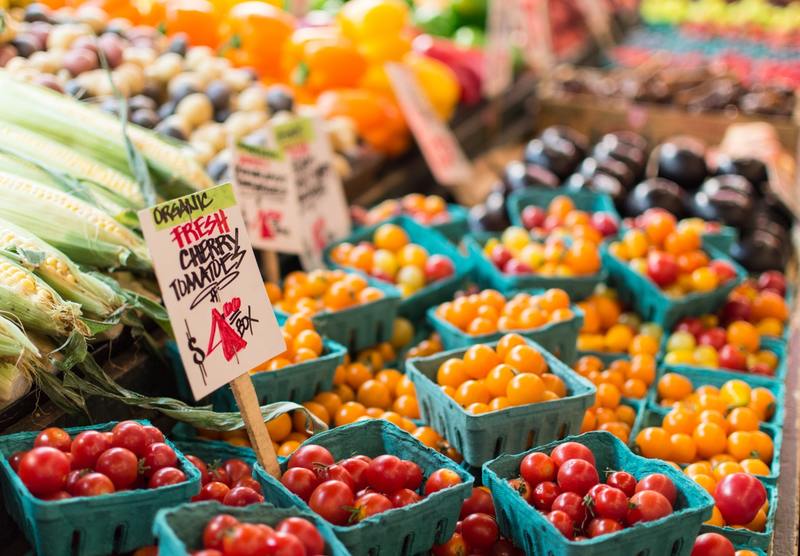
3. Buy local food
Locally grown food refers to food grown within a geographical region that could be considered local to your particular area, whether its within your county, city, neighborhood, or own backyard. Locally grown food can include fruits, vegetables, dairy products, eggs, and even locally raised meats.
Purchasing locally grown food helps the environment because it preserves small farm land, reduces carbon emissions by cutting down the distance that the food needs to be transported, and encourages genetic diversity.
Sustainability researcher Lauren Larry, who also owns Lauren Larry Yoga, recommends visiting nearby farmers’ markets to pick up delicious locally grown food.
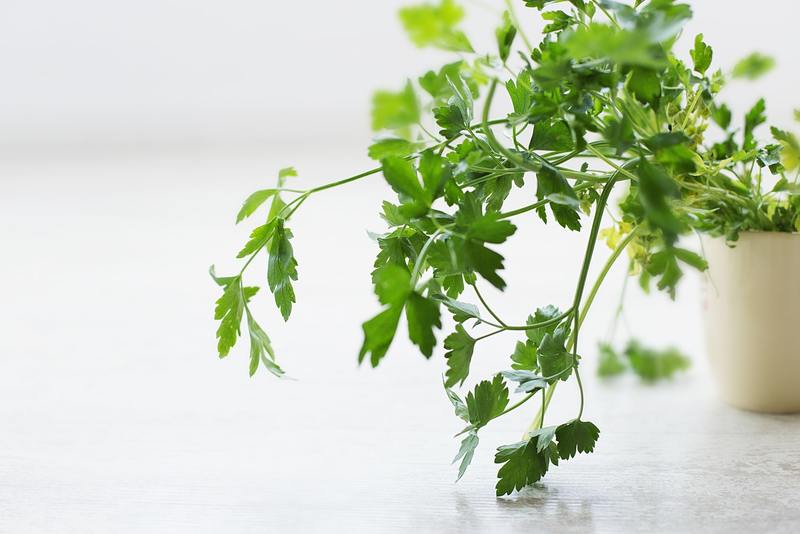
4. Grow your own herbs
Growing your own herbs at home is a fun, eco-friendly way to make your kitchen greener, as well as do your part to take pressure off of the overworked global food system; it’s estimated that the planet will need to produce 70 percent more food by 2050 to sustain the projected population growth over that time.
Herbs make great additions to meals and drinks, are easy to grow, and take up minimal space. Of course, you can plant them outside if you have adequate space, but if not, you can grow them right on your kitchen counter using a product like Urban Leaf.
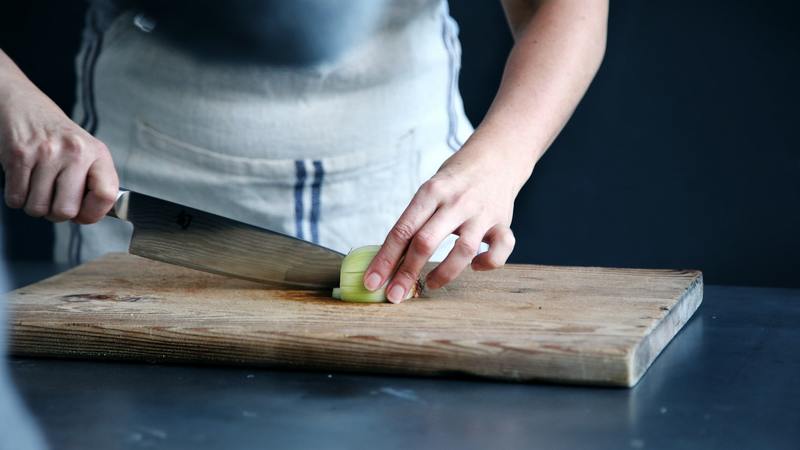
5. Cook smart
A significant amount of energy is used while cooking. To ensure that you don’t waste energy while you cook, use a microwave instead of an oven when possible and put lids on pots and pans to heat food more quickly.
Green designer Pablo Solomon also suggests using hand-powered gadgets such as coffee grinders, vegetable choppers, and nut choppers when possible to save electricity.

6. Reduce waste
The kitchen typically generates the most waste out of all the rooms in the house. If you are regularly tossing out food, it’s a good indicator that you’re buying and cooking too much. Instead, try to plan, purchase, and prepare your food so that it’s sufficient for your needs without having anything leftover that needs to be thrown out.
To ensure you’re actually using the food you buy and making it last as long as possible, Catherine Agopcan, sustainability advocate and founder of The Do Something Project, which is a blog dedicated to minimalism and eco-friendly living, has some helpful advice:
- Keep foods with natural preservatives in the door shelves, as this is the warmest place because the door gets opened more
- Place foods that don’t require cooking in the upper shelves, as they tend to be warmer because heat travels up, even in the fridge
- Store dairy items in the lower and middle shelves, because these are the coldest areas of the fridge and will keep the food better for longer
If you do have leftovers after you cook, store them in a reusable dish and eat them! Growth expert Stacy Caprio suggests purchasing beeswax-based coverings that act like plastic wrap to cover and store your food. These coverings are great for the environment because they can be washed and reused repeatedly, which helps reduce plastic wrap waste.
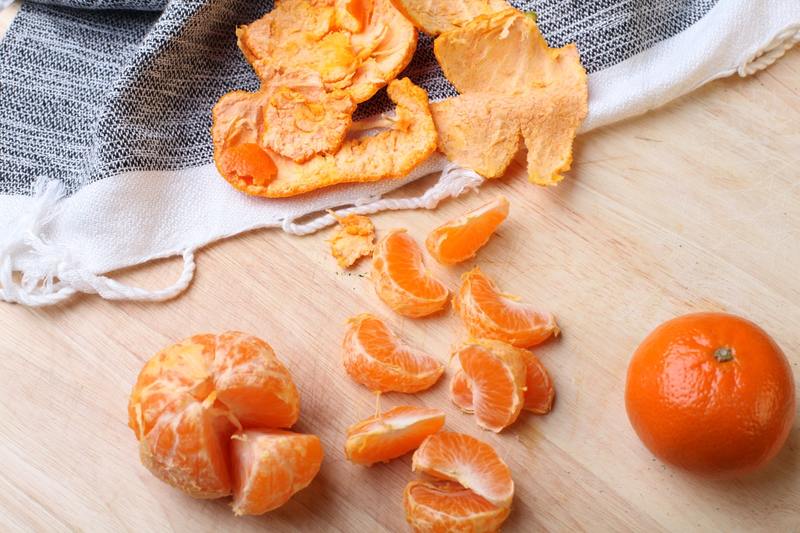
7. Start a compost pile
Composting is beneficial to the environment because it helps keep organic matter out of landfills, which reduces pollution. When layers of trash at the landfill bury plant matter, it creates an airless environment that causes the plant matter to produce methane gas, which is 21 times more potent than carbon dioxide, as it decays. Composting food waste also helps to feed and improve soil.
While meats, dairy products, and grease do not necessarily compost well due to smells, insects, and animals, uncooked organic waste such as vegetable and fruit peelings, coffee grinds, cardboard, and paper all make great additions to a compost pile.
If you don’t have adequate outdoor space in which to start a compost pile, many local farmers’ markets and other environmental organizations will gladly accept your compost. Or, as green designer Pablo Solomon proposes, you might even look into an under-the-sink composter that uses earthworms to create great potting soil.

8. Recycle
Similar to composting, recycling helps the environment by reducing greenhouse gas emissions from landfills and incinerators. It also decreases the need to extract new resources from the earth and replace logging, drilling, and mining of virgin materials with recycled materials that we no longer want, which reduces the energy needed to process and manufacture new goods.
One of the simplest ways to start recycling is to set up a recycling center in your kitchen, which could be as simple as labeling and placing plastic bins underneath your sink or in a spare cabinet. If you have accessible recycling bins, it’s quick and easy to toss recyclables in the correct bin rather than in the trash can.

9. Ditch disposable dishes and utensils
Another way to reduce waste in the kitchen is to stop using disposable cups, plates, bowls, and utensils that are thrown out after just one use.
Instead, invest in real dishes and cutlery that can be reused for years and years to come.

10. Only run dishwasher when full
Dishwashers have come a long way over the last decade in terms of efficiency, and studies have shown that these days, dishwashers are typically more energy and water efficient than washing dishes by hand.
However, no matter how efficient your dishwasher is, running it at half full wastes twice the water and twice the energy, and that’s not good for the planet or your utility bill.
To combat this, make sure your dishwasher is loaded to capacity before running a cycle.

11. Unplug appliances when not in use
The average American has about 40 household appliances that they routinely leave plugged in. Even when turned off, many of these appliances continue to draw power if they are plugged in. In fact, according to the Department of Energy, anywhere from 5 to 10 percent of your household electricity use can be credited to devices that are plugged in 24 hours a day.
To save energy (and money!), unplug your coffee maker, toaster, and other small kitchen appliances when you aren’t using them.

12. Eliminate paper towels
While paper towels are convenient, they aren’t the best for the environment; disposable paper products reportedly account for more than 25 percent of landfill waste.
Rather than having paper towels available in your kitchen, keep a stash of reusable dishcloths or tea towels on hand in an easily accessible place for drying hands and cleaning up messes. Sustainability advocate Catherine Agopcan also suggests replacing one-time-use paper napkins in your kitchen with cloth napkins that can be used over and over again.

13. Switch out sponges
Not only do sponges quickly fill with germs, which can put your family at risk, they are also harmful to the planet and can take more than 50,000 years to break down at a landfill.
Marianna Sachse, founder of sustainable children’s wear line Jackalo, advises swapping out kitchen sponges with wooden scrub brushes, as they work well, are durable, can be easily cleaned in the dishwasher when needed, and can be composted when worn out.

14. Purchase or make natural cleaning products
Many conventional cleaning products contain ingredients that are toxic, hazardous, non-biodegradable, and from non-renewable resources such as petroleum, so they negatively affect the earth’s ecosystems. Additionally, when you release these products into the air in your home, they can contribute to air pollution, linger long after use, and result in a number of health problems for your family.
For the sake of your family’s health and the wellbeing of the environment, thoughtfully select and purchase green cleaning products that contain non-toxic, eco-friendly ingredients and are produced by sustainable manufacturers, or consider creating your own natural products.
Thousands of simple homemade cleaning product recipes can be found online. For example, according to Iris and Zach, co-directors of Gingerhill Farm Retreat, a farm community dedicated to exploring sustainability, self-sufficiency, and stewardship of the land, white or apple cider vinegars are both excellent alternatives to conventional cleaning solutions, tea tree oil diluted in water effectively disinfects counter services, and lemon juice is excellent for removing grease and stains.
Health and wellness coach Stephanie Wiscott recommends integrating essential oils, which are naturally antimicrobial and antibacterial, into your homemade products to beef up their cleansing properties and give them a delicious aroma.

15. Get a water purifier
Cutting back on bottled water in your home reduces plastic waste, but many people still choose to purchase and drink it because they live in areas where the tap water doesn’t taste good or isn’t safe to drink. In fact, as many as 63 million Americans may be consuming harmful H2O.
To get safe, tasty water and help the environment by cutting down on your household’s single-use plastic bottle waste, invest in a water purifier. Water purifiers like those available from Bluewater remove toxic contaminants such as lead, chemicals, pharmaceutical residues, and microorganisms from the water via reverse osmosis, as well as drastically cut down on the water wastage common to traditional filtering technology.
On a similar note, if your family enjoys drinking soda, look into getting a water carbonator such as those offered by SodaStream rather than frequently purchasing canned or bottled soda. With every one of its carbonating bottles, SodaStream prevents 3,700 single-use plastic bottles and cans from being used and discarded.

16. Replace plastic containers with glass
According to Jordana Viuker Brennan, Founder and Senior Consultant at Confident Buildings, a company that helps people improve their home’s efficiency and environmental quality, plastics such as storage containers, plastic wrap, baggies, and water bottles should not be in contact with food or liquids for extended periods of time because harmful chemicals in the plastic can be released into the contents stored in them.
Instead, invest in glass jars, as they are safer to store food, tend to last longer, and allow you to see how much of an item you have left so you don’t unnecessarily waste food.

17. Do away with Teflon cookware
Non-stick and PTFE pots and pans contain Teflon, which can release toxic fumes that harm air quality and human health when under high temperature conditions.
Rather than purchasing non-stick cookware, select cast iron or stainless steel alternatives.

18. Upgrade to Energy Star appliances
If you’re remodeling or replacing the appliances in your kitchen soon, choose Energy Star certified products. To earn the Energy Star label, products must meet strict energy efficiency criteria set by the U.S. Environmental Protection Agency and the U.S. Department of Energy. Because Energy Star appliances use less energy, they contribute to fewer harmful greenhouse gas emissions from power plants and save you money on your electricity bill.
Additionally, do not purchase larger appliances than you need. Miguel Suro, founder of personal finance and lifestyle blog The Rich Miser, recently downgraded a tall, industrial quality refrigerator that came with his home to a smaller, french door fridge and found that the new fridge is more eco-friendly and uses much less electricity. He also noted that the smaller capacity of the new fridge removed the temptation to buy too much food that his larger fridge presented, which often resulted in unnecessary waste.
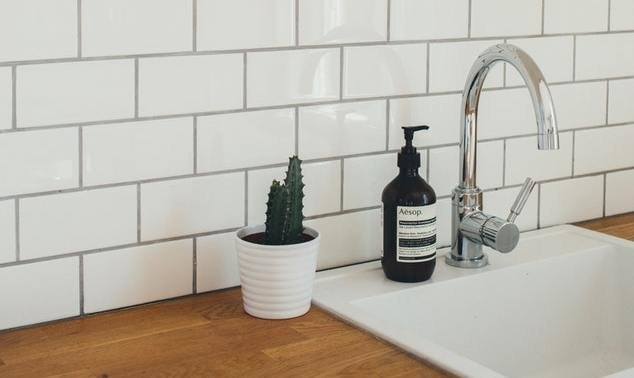
19. Install a low-flow aerator on your faucet
About 10 to 15 percent of a typical home’s water usage can be credited to faucets. To conserve water (and save money on your water bill!), consider replacing the aerator on your kitchen faucet with a low-flow alternative.
Low-flow aerators are different from traditional aerators because they mix the water coming out of the faucet with air, which results in less water used per minute. Additionally, low-flow aerators use a high pressure technique so that you don’t have to compromise water pressure levels in order to reduce usage.

20. Switch to LED bulbs
If you haven’t already, replace the incandescent light bulbs in your kitchen with LED bulbs to save energy, reduce greenhouse gas emissions, and lower your electricity bill.
LEDs use only about 20 percent of the energy of standard incandescent bulbs to provide the same level of light, as well as last approximately 25 percent longer.

21. Utilize sustainable furniture and building materials
If you’re in the market for kitchen furniture, consider choosing something made out of reclaimed wood, which is environmentally friendly because it salvages materials that would otherwise go to waste, requires fewer resources to manufacture, and preserves ecosystems by reducing the need to cut down living trees. Reclaimed wood can also be used for other purposes in the kitchen, including flooring and cabinets.
However, wood is not the only thing that can be reclaimed. If you’re remodeling or looking to update other parts of your kitchen, you can help the environment by incorporating a variety of salvaged materials. Architectural salvage companies such as The Old House Parts Company offer many options for sustainable building materials, including reclaimed hardware for cabinet pulls, hinges, and door knobs, as well as salvaged countertops, flooring, lighting, sinks, and fixtures.
As far as countertops go, “it’s important to consider embodied energy, which is the sum of all energy required to produce countertop materials. Typically, lower embodied energy is a good indication of greater sustainability,” says Matt Daigle, CEO of Rise, a leading online authority for sustainable home improvement. “Granite countertops while durable, have a relatively high embodied energy when transported from afar, but if you’re able to source stone from a local quarry, it’s a great sustainable option that can also be returned to the earth when it’s no longer used for a countertop.
“Concrete and wood have the least embodied energy of the countertop materials. Wood has significant sustainability advantages, as it’s a renewable material that takes little energy to produce and process. When sustainably harvested, it stores carbon dioxide in the wood itself for the life of the countertop, decreasing the impact on the climate. When a wood countertop is taken out of service, it can be refinished and reused for other projects.
You may also want to consider an up-and-coming countertop trend: paper composite countertops, which are made from recycled and/or sustainably grown paper and paper-making byproducts and a formaldehyde-free resin."

22. Choose eco-friendly fibers
Natural fibers such as cotton, wool, silk, and other plant and animal materials are good for the planet because they are renewable, biodegradable, and carbon neutral, so they can be sourced and used without depleting or damaging the environment.
If you’re in need of new fabric items for your kitchen such as chairs, tablecloths, placemats, curtains, or rugs, try to select those made of natural, eco-friendly fibers.

23. Add greenery
According to Nicola Croughan, an interior designer at Blinds Direct, one of the easiest ways to make your kitchen more eco-friendly is to use plants and fresh greenery as decoration. If you’re short on counter space, hanging plants are a great option.
Plants will purify and filter toxins from the air, vastly improving the quality and providing plenty of health benefits. Greenery will also make your space feel lighter, brighter, and more welcoming.
Interested in making your home even more eco-friendly and increasing your electricity bill savings? Click here to learn more about residential solar power!
Related Articles
November 24th, 2024
Solar
The Best PV Solar Panels
By Best Company Editorial Team
May 29th, 2024
By Carlie Ellet
May 21st, 2024
Get Our Newsletter - Be in the Know
Sign up below to receive a monthly newsletter containing relevant news, resources and expert tips on Solar and other products and services.
We promise not to spam you. Unsubscribe at any time. Privacy Policy